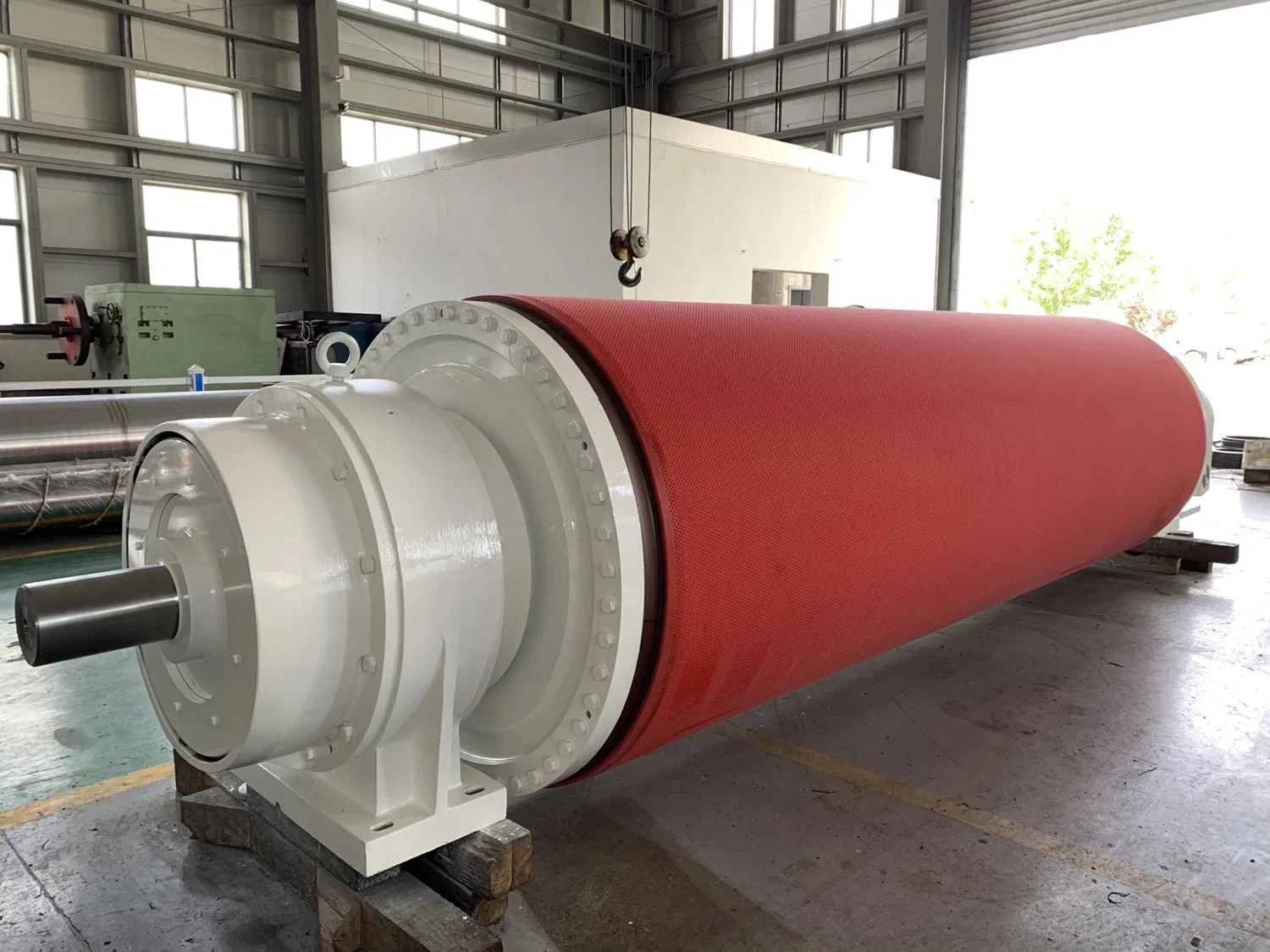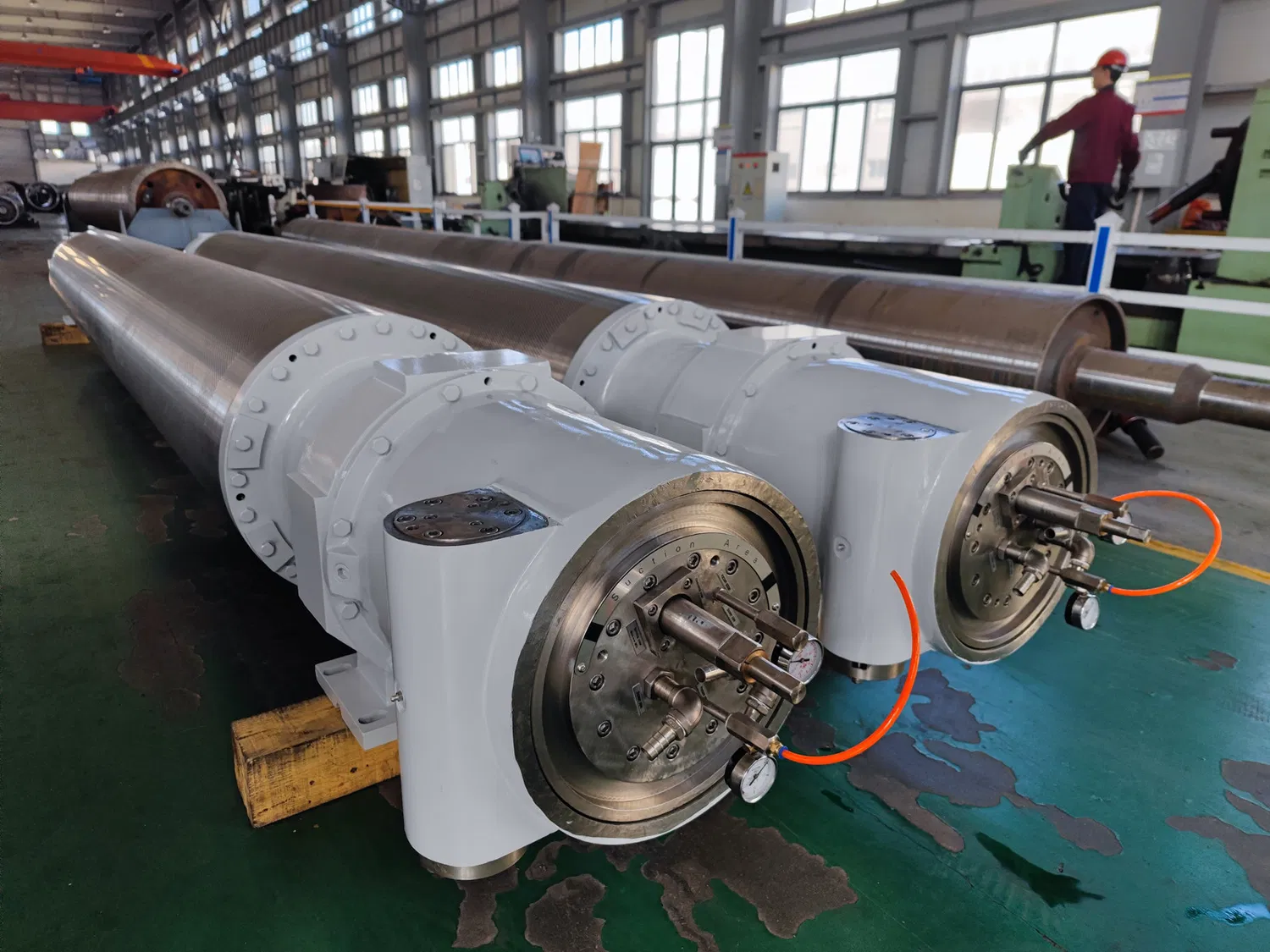Understanding the Core Function of Guide Rolls in Industrial Processes
At its heart, a guide roll's primary function is to direct and support a continuous web of material as it moves through various stages of processing. Whether it’s paper, plastic film, fabric, foil, or even metal strip, these rolls ensure the material travels along a predetermined path without wrinkling, tearing, or misaligning. This precision is paramount for maintaining product quality, minimizing waste, and optimizing production speed. Without proper guidance, materials can wander, leading to costly downtime, product defects, and increased scrap rates. Interestingly enough, the design and material of a guide roll are highly specific to its application. A roll designed for a high-speed printing press will have vastly different specifications than one used in a slow-moving textile loom. Factors like material tension, operating temperature, environmental conditions (e.g., humidity, dust), and the type of material being handled all influence the ideal guide roll design. This complexity underscores why partnering with an experienced guide roll manufacturer is non-negotiable. They possess the expertise to recommend, design, and produce rolls that meet the exact demands of your unique operational environment.The Silent Workhorses: Types and Applications
The diversity of industrial applications necessitates a wide range of guide roll types, each engineered for specific tasks. Understanding these variations is key to appreciating the manufacturer's role. * Idler Rolls: These are the most common type, simply rotating freely on their bearings as the web passes over them. They are crucial for supporting the web and changing its direction. * Driven Rolls: Unlike idler rolls, these are connected to a motor and actively drive the web forward, often used for tension control or to pull material through a process. * Spreader Rolls (Bow Rolls): Designed with a slight curvature, these rolls gently spread the web laterally to remove wrinkles and ensure uniform tension across the material's width. * Nip Rolls: These work in pairs, pressing together to create a "nip" point that can drive the web, control tension, or apply pressure for processes like laminating or coating. * Heat Transfer Rolls: Equipped with internal heating or cooling mechanisms, these rolls are vital for processes requiring precise temperature control of the web.
What Defines a Superior Guide Roll Manufacturer?
Choosing a partner for such critical components requires careful consideration. Not all manufacturers are created equal, and the subtle differences can have significant impacts on your bottom line. Based on my observations and many experts agree, a truly superior guide roll manufacturer excels in several key areas:Precision Engineering and Manufacturing Excellence
The hallmark of a top-tier manufacturer is their unwavering commitment to precision. Guide rolls require extremely tight tolerances regarding their concentricity, straightness, and surface finish. Even a tiny deviation can lead to web wandering, creasing, or inconsistent product quality. A leading manufacturer will employ advanced machining techniques, state-of-the-art balancing equipment, and rigorous quality control protocols to ensure every roll meets exacting standards. They understand that precision guide roll production is not just a buzzword, but a fundamental requirement for reliable performance. * Material Selection: The right material is crucial. Whether it's steel, aluminum, carbon fiber, or specialized alloys, the manufacturer should have deep expertise in selecting materials that offer optimal strength, weight, corrosion resistance, and thermal properties for the intended application. * Surface Finishes: The surface of a guide roll can be smooth, textured, or coated (e.g., chrome, ceramic, rubber). The choice depends on the material being handled and the desired level of grip or release. A good manufacturer offers a wide range of finishing options and can advise on the best solution. * Bearing Integration: The quality of the bearings is as important as the roll itself. High-quality, properly installed bearings ensure smooth, low-friction rotation, extending the life of the roll and reducing energy consumption.Customization and Problem-Solving Capabilities
Frankly speaking, off-the-shelf solutions rarely fit perfectly in complex industrial setups. A superior guide roll manufacturer doesn't just sell products; they offer solutions. This means having the engineering capability to design and produce custom rolls based on your specific requirements, including unique dimensions, mounting configurations, material specifications, and environmental considerations. They should be able to analyze your operational challenges and propose innovative designs that enhance efficiency and reliability. This consultative approach is invaluable.
Technological Advancement and Innovation
The industrial landscape is constantly evolving, with demands for faster speeds, lighter materials, and more precise control. A forward-thinking guide roll manufacturer invests in research and development, exploring new materials, manufacturing techniques, and design concepts. They should be at the forefront of innovations like lightweight carbon fiber rolls for high-speed applications, advanced ceramic coatings for wear resistance, or integrated sensor technology for real-time monitoring. This commitment to innovation ensures that their clients always have access to the most advanced and efficient guide roll solutions available.The Manufacturing Process: From Raw Material to Precision Component
The journey of a guide roll from raw material to a highly precise component is a testament to modern engineering and manufacturing. It's a multi-stage process that demands expertise at every turn.Design and Material Sourcing
It all begins with detailed design, often using CAD/CAM software, to create a blueprint that accounts for all operational parameters. Simultaneously, high-quality raw materials are sourced. For instance, for lightweight applications, aerospace-grade aluminum or carbon fiber composites might be chosen. For heavy-duty roles, specific grades of steel are selected for their strength and durability.Machining and Fabrication
This is where the raw material takes shape. Precision machining, often using CNC (Computer Numerical Control) machines, is employed to turn, mill, and grind the roll body to exact dimensions. The critical step of balancing then follows. Dynamic balancing ensures that the roll rotates smoothly at high speeds without vibrations, which could otherwise lead to web instability and premature bearing failure. Many experts agree that proper balancing is one of the most overlooked yet critical aspects of guide roll performance.Surface Treatment and Finishing
Once the core roll is formed and balanced, its surface is prepared. This might involve polishing to an extremely smooth finish, applying specialized coatings (like hard chrome plating for wear resistance or rubber for grip), or texturing for specific web handling properties. Each finish serves a distinct purpose, influencing friction, release characteristics, and durability.Assembly and Quality Control
Finally, the bearings, shafts, and any other auxiliary components are meticulously assembled. The finished guide roll then undergoes rigorous quality control checks. This includes dimensional inspection, run-out testing (to ensure concentricity), surface finish analysis, and sometimes even simulated operational testing. Only rolls that pass these stringent checks are deemed ready for delivery.Investing in Quality: The Long-Term Benefits of a Reputable Guide Roll Manufacturer
It's worth noting that while the initial cost of a high-quality guide roll from a reputable manufacturer might seem higher than a cheaper alternative, the long-term benefits far outweigh the initial outlay. * Reduced Downtime: High-quality rolls are more reliable, reducing the frequency of breakdowns and the associated costly production interruptions. * Improved Product Quality: Precise web handling leads to fewer defects, less scrap, and a more consistent final product, enhancing your brand's reputation. * Extended Lifespan: Durable materials and superior manufacturing processes mean the rolls last longer, reducing replacement costs and maintenance efforts. * Optimized Performance: Rolls designed specifically for your application can improve line speed, tension control, and overall operational efficiency. * Energy Efficiency: Smooth-running, well-balanced rolls with high-quality bearings reduce friction, leading to lower energy consumption. To be honest, skimping on guide rolls is a classic false economy. The incremental savings on purchase price are quickly dwarfed by increased operational costs, lost production, and compromised product quality. Many industrial roller suppliers might offer cheaper alternatives, but few can match the comprehensive value provided by a dedicated guide roll manufacturer focused on precision and performance.The Future of Guide Roll Manufacturing: Trends and Innovations
The industry isn't standing still. The drive for greater efficiency, sustainability, and automation is shaping the future of guide roll manufacturing. * Lightweight Materials: The increasing use of carbon fiber and advanced composites is reducing inertia, allowing for faster line speeds and lower energy consumption, especially in high-acceleration applications. * Smart Rolls: Integration of sensors for real-time monitoring of temperature, vibration, and even web tension is becoming more common. This data allows for predictive maintenance and immediate operational adjustments. * Sustainable Manufacturing: Manufacturers are increasingly focusing on eco-friendly processes, reducing waste, and using recyclable materials where possible. * Advanced Coatings: New coating technologies are continually being developed to offer enhanced durability, specific friction characteristics, and improved resistance to chemicals or extreme temperatures. These trends highlight the dynamic nature of the industry and the continuous need for manufacturers to innovate. Partnering with a guide roll manufacturer that embraces these advancements ensures your operations remain competitive and future-proof. In conclusion, the guide roll, though often inconspicuous, is a cornerstone of efficiency and quality in countless industrial processes. The expertise, precision, and commitment to innovation of your chosen guide roll manufacturer directly translate into the reliability and profitability of your production line. Investing in a top-tier manufacturer is not merely a purchase; it's a strategic partnership that underpins your operational excellence and ensures your materials are always guided with the utmost care and precision.For more detailed information, please visit our official website:Guide roll manufacturer
About the author: Dr. Alistair Finch is a seasoned industrial engineering consultant with over two decades of experience specializing in precision machinery and web handling systems. His expertise spans material science, advanced manufacturing processes, and operational efficiency, having advised numerous global firms on optimizing their production lines. Dr. Finch is passionate about the critical role of often-overlooked components like guide rolls in achieving peak industrial performance.


